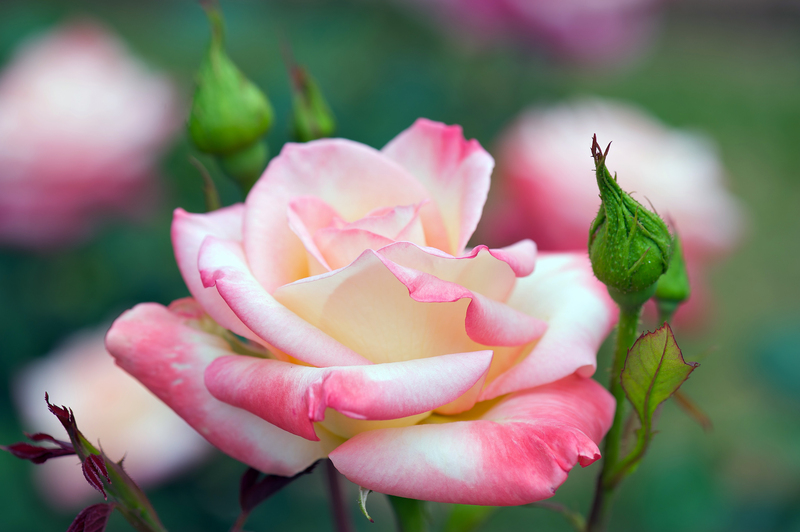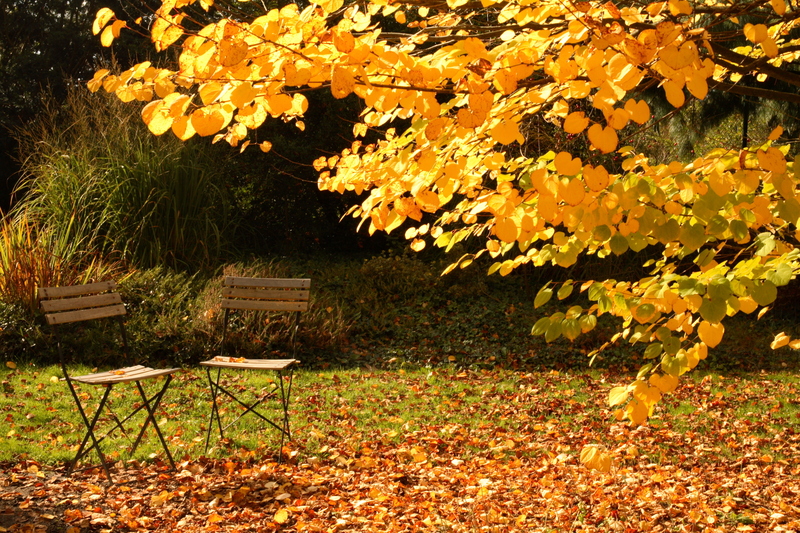Crafting an Herb Garden: A Guide to Flavorful Success
Posted on 10/06/2025
Crafting an Herb Garden: A Guide to Flavorful Success
Are you dreaming of stepping outside your kitchen to pluck fresh basil or crisp rosemary for your latest culinary creation? Cultivating your own herb garden is both rewarding and practical. Whether you have acres to spare, a tiny balcony, or just a kitchen windowsill, growing herbs at home infuses your cooking with flavor and your home with beauty. This herb gardening guide equips you with the knowledge and motivation to create a flourishing space full of your favorite herbs.
Why Grow Your Own Herb Garden?
Fresh herbs provide a burst of flavor and aroma that dried alternatives simply cannot match. Beyond taste, home-grown herbs offer several advantages:
- Cost-effective: Save money by avoiding overpriced supermarket bundles.
- Fresher Flavors: Pick herbs at their peak, guaranteeing vibrant taste and nutrition.
- Sustainability: Reduce food waste and lower your environmental impact.
- Convenience: Harvest on demand, right outside your door.
- Decorative Value: Enjoy attractive foliage and blooms that enhance your landscape or home interior.

Choosing the Best Location for Your Herb Garden
Herbs generally thrive in sunny, well-draining spots. Consider the following factors as you plan where to grow culinary herbs:
- Sunlight: Most herbs require at least 6 hours of direct sunlight daily. South-facing spots or sunny windowsills are ideal.
- Soil Quality: Herbs prefer loamy, well-draining soil. If your soil is heavy or clay-like, amend it with compost or organic matter.
- Water Access: Ensure your chosen location has convenient access to water for easy maintenance.
- Protection: Consider wind, pets, or wildlife that may damage tender herbs. Use fencing, netting, or containers as needed.
Herb Garden Ideas: Containers, Raised Beds, and Beyond
There's no single way to craft the perfect herb garden. Choose from these creative options based on your space and style:
1. Classic In-ground Herb Gardens
Design dedicated plots or borders in your yard. Group herbs by their water and sunlight needs for a low-maintenance layout.
2. Raised Bed Herb Gardens
Raised beds improve drainage and ergonomics, making them a smart choice for both novice and experienced gardeners. Organize herbs in zones to ensure healthy growth and easy harvesting.
3. Container Herb Gardens
If space is limited, use pots, window boxes, or repurposed containers to create a portable and versatile herb display. Group various containers together for a lush, organized look.
- Tip: Ensure containers have adequate drainage holes.
4. Kitchen Counter or Indoor Herb Gardens
Utilize windowsills or indoor grow lights to maintain a year-round supply of fresh herbs. Compact varieties like basil, chives, and parsley do especially well indoors.
5. Vertical Herb Gardens
Maximize small spaces with wall-mounted pockets, trellises, or hanging planters filled with your favorite culinary herbs.
Selecting the Right Herbs for Your Garden
Choosing which herbs to grow is the most exciting part of crafting your herb garden. Here's a list of popular and easy-to-grow herbs to get you started:
- Basil: Essential for Italian dishes, pestos, and salads. Needs warmth and abundant sunlight.
- Parsley: Rich in vitamins, perfect for garnishes and cooking. Choose flat-leaf for flavor or curly for decoration.
- Mint: Great in teas, desserts, and summer drinks. Plant in containers to prevent spreading.
- Rosemary: Woody and aromatic, ideal for roasts. Prefers dry conditions and full sun.
- Thyme: Versatile and hardy, it pairs well with meats and vegetables.
- Cilantro (Coriander): Vital in Mexican and Asian cuisines. Loves cooler temperatures.
- Chives: Mild onion flavor, perfect for salads, soups, and egg dishes. Small purple flowers are edible, too.
- Dill: Essential for pickling and seafood, with feathery, delicate foliage.
- Oregano: Robust Mediterranean flavor, excellent in tomato sauces and pizzas.
- Sage: Earthy and savory, a favorite in stuffing and poultry dishes.
Consider Your Culinary Preferences
Grow herbs that you love to cook with. If you enjoy Asian cooking, consider lemongrass, Thai basil, or shiso. Adventurous gardeners may experiment with lesser-known varieties like tarragon, stevia, or sorrel.
Starting Your Herb Garden: Seeds vs. Seedlings
You can begin your herb garden from seeds or starter plants (seedlings). Each approach has pros and cons:
- Seeds: Economical and offers a wide selection of varieties. However, germination can take time, and some herbs--like rosemary or lavender--are slow to sprout.
- Seedlings: Provide a head-start and greater immediate success, especially for beginners. Purchase from reputable local nurseries for the healthiest plants.
Best Herbs for Seed Sowing
Basil, cilantro, dill, and chives usually flourish when sown directly into the soil or containers.
Best Herbs to Start from Seedlings
Choose seedlings for rosemary, thyme, oregano, and sage, as they have a slower germination rate but thrive once established.
Planting and Design Tips for a Successful Herb Garden
- Soil Preparation: Work in organic compost for nutrients and structure. Avoid heavy fertilization--herbs generally prefer lean soil, which intensifies flavor.
- Spacing: Allow adequate space for airflow and to prevent diseases. Refer to each plant's mature size on seed packets or plant tags.
- Companion Planting: Some herbs deter pests when paired with vegetables or flowers. For example, basil repels aphids and whiteflies.
- Watering: Most herbs dislike soggy soil. Water deeply but infrequently, allowing the top inch of soil to dry between watering.
- Mulching: Apply organic mulch to suppress weeds, retain moisture, and regulate temperature.
- Labeling: Mark your herbs with labels to avoid confusion, especially in the first year as you learn to recognize your green friends.
Maintaining Your Herb Garden for Year-Round Success
Consistency is key to a healthy, productive herb garden. Here's how to keep your herbs flourishing:
- Water Wisely: Herbs generally require less water than vegetables. Avoid wetting leaves to minimize disease.
- Prune Regularly: Pinch or snip back growth frequently to prevent flowering (bolting) and to encourage bushy, productive plants.
- Harvest Mindfully: Never remove more than one-third of a plant at once. Harvest early in the day for peak flavor.
- Pest and Disease Control: Watch for aphids, mites, and fungal diseases. Use natural remedies like neem oil or insecticidal soap if needed.
- Feed Sparingly: Over-fertilizing leads to lush, but less flavorful, foliage. A light application of compost is usually all that's necessary.
Harvesting and Preserving Your Homegrown Herbs
Harvesting is one of the most satisfying aspects of maintaining an herb garden. Follow these tips for maximum yield and flavor:
- Timing: Pick leaves just before flowering for peak aroma and taste.
- Methods: Use scissors or pruning shears for clean cuts that won't damage the plant.
- Preserving: Dry or freeze excess herbs for use throughout the year. Tie small bunches and air dry, or chop and freeze in ice cube trays with olive oil.
Popular Preservation Methods
- Drying: Best for hardy herbs like rosemary, oregano, and thyme.
- Freezing: Retains color and flavor for basil, chives, and parsley.
- Making herb-infused oils and vinegars: Preserves flavor and makes attractive, gourmet gifts.
Designing a Beautiful and Functional Herb Garden
An herb garden can be as gorgeous as it is practical. Consider these design ideas:
- Symmetry and Shape: Plant in geometric patterns or use spiral beds for visual appeal and efficiency.
- Mix Textures and Heights: Pair fine-leaved herbs like dill with bushier varieties like basil or sage.
- Add Pathways: Use stepping stones or mulch trails for both beauty and access.
- Include Pollinator Plants: Add edible flowers like calendula and nasturtium, which attract beneficial insects.
Common Mistakes to Avoid When Crafting Your Herb Garden
- Overcrowding: Leads to poor air circulation and increases disease risk.
- Overwatering: Most herbs detest soggy soil and root rot.
- Using Too Much Fertilizer: Can reduce essential oil concentration, weakening flavor.
- Ignoring Sunlight Needs: Shaded herbs typically grow lanky and lack strong flavor.
- Planting Invasive Herbs Without Containment: Mint, lemon balm, and oregano can easily overtake a garden bed. Use containers to keep them in check.

Frequently Asked Questions About Herb Gardening
Can I grow herbs indoors?
Absolutely! Herbs like basil, parsley, chives, and mint do well indoors, provided they receive enough light. Position them on a sunny windowsill or use grow lights to mimic outdoor conditions.
How often should I water my herbs?
Water needs depend on the herb and the environment. As a general rule, let the top inch of soil dry out before watering again. Potted herbs may need more frequent watering, especially in hot weather.
Which herbs cannot be grown together?
Some herbs thrive on different care schedules or occupy too much space. For example, rosemary prefers dry soil while basil likes more moisture; mint spreads aggressively and should be grown separately.
How do I prevent herbs from bolting?
Bolting (going to seed) is common in annuals like basil and cilantro. Regular pruning, ample water, and providing shade during hot weather will prolong leafy growth.
Are there perennial herbs I can grow year after year?
Yes! Rosemary, thyme, sage, oregano, chives, and mint are perennials in many climates. They will return each season with minimal upkeep.
Conclusion: Savor the Joy of Your Flavorful Herb Garden
Cultivating an herb garden is both a sensory delight and a practical addition to your home. With a little planning and consistent care, you'll enjoy a bounty of aromatic herbs that elevate your cooking, support your health, and beautify your environment. Whether you choose a sunny backyard plot or a compact indoor setup, your individual approach to crafting an herb garden will bring unique joy and flavor to everyday experiences.
Start your flavorful journey today--explore creative designs, select your favorite herbs, and embrace the satisfaction of growing your own culinary herbs at home. The world of herb gardening awaits!

